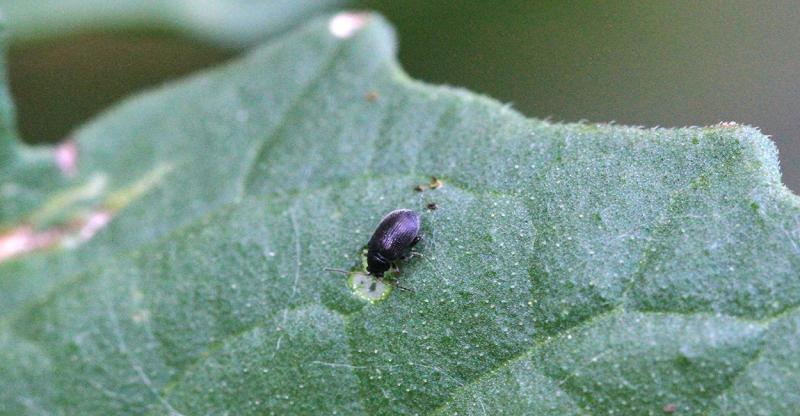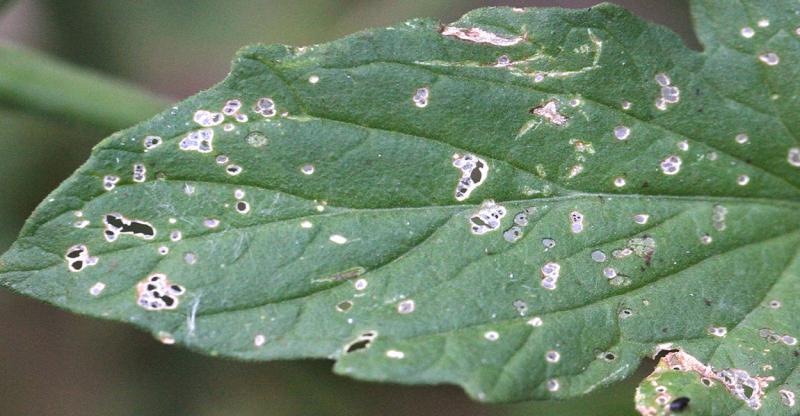Written with contributions by Shelby Pritchard, former SDSU Extension Pest Management Specialist.
Originally Submitted: June 22, 2022
Flea beetles are once again causing issues for gardeners across South Dakota. These herbivorous beetles can be a pest of many different garden plants, including tomatoes, peppers, beans, squash and lettuce. The visible injury is caused by the adults. They feed on the leaves and stems of plants and leave behind many small, irregular holes or pits. This injury can result in severe stunting or death of infested plants, especially for seedlings that don’t have the resources to grow out of it. Flea beetles thrive in warm and sunny weather, so the upcoming forecast will be ideal conditions for this pest.
Profile

Most flea beetle adults are less than 1/8 of an inch long, dark colored and have a shiny appearance (Figure 1).
They get their name because of their enlarged hind legs that are used for jumping. When disturbed, the beetles will spring away, similar to the behavior of a flea.
As mentioned previously, flea beetle adults cause the majority of injury to plants by causing defoliation known as “shot hole” injury. This occurs when the beetles chew numerous small holes on the leaves of infested plants, making them look as if they were hit by a shotgun blast (Figure 2).

Overwintering adults first become active in the spring. The adults feed for about a month before they begin laying eggs in the soil. Larvae soon hatch and burrow down to feed on the roots of nearby plants. Root feeding at this stage is usually minimal and has little impact on plants. After another month, the larvae pupate and emerge as new adults. This cycle may continue for one or two more generations, depending on the species.
Management
Physical barriers, like floating row covers can help protect plants from flea beetles. Planting trap crops, such as radish or alyssum, can be effective as well. Trap crops draw beetles away from the rest of the garden where they can then be treated with an insecticide or otherwise destroyed. Organic products, such as neem oil and diatomaceous earth can be applied on and around plants as natural repellants that keep flea beetles away or deter them from feeding. Dusts, like diatomaceous earth, must be reapplied after watering or rain events, as they will wash away and have no residual effect. Insecticide treatments may be necessary for severe infestations. Check the product label on insecticides to ensure that they are labeled for flea beetles and are approved for the crop that you intend to use them on.


